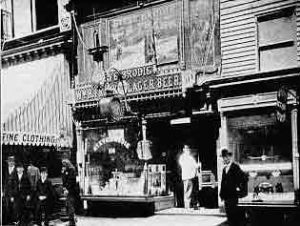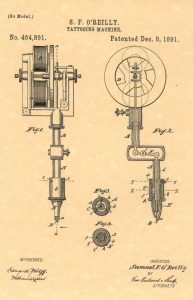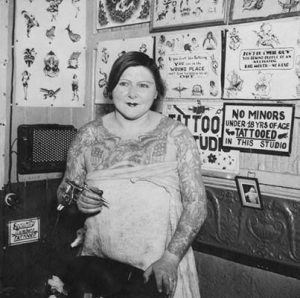The Bowery Crew — Founding Fathers (and Mother) of the Tattoo Trade
The world owes a lot of the popularity of tattoos in modern times to New York. And particularly to an area on the Lower East Side known as the Bowery. At the time the city’s tattoo boom went down in the early 20th century, this was the roughest part of the city.
Farm-land and Five Points 
The Bowery was named after a Dutch word — bouwerij, meaning farm. When the Dutch first established New Amsterdam on Manhattan, they laid out farms along the area. After the English took over the colony and renamed the city New York in 1664, the Bowery grew in importance. Taverns and inns opened up, drawing weekend revellers, creating a demand for other forms of entertainment. There was horse racing, circus performances, gambling and dancing. Over the years, a particular five-cornered intersection nicknamed ‘Five Points’ became so infamous, that in the 1830s visitors would go ‘slumming’ on tours to see the debauchery and poverty.
Tattooists would often share spaces with the neighbourhood’s barbers. A steady stream of male clientele in a clean and organised space being a prerequisite for both businesses. Sailors and soldiers would come for a haircut and to get inked all at once while ashore. Then party in one of the many bars or brothels in the area throughout the night.
The pioneers
As with so many other things in the evolution of U.S. history (although many of its inhabitants seem to have forgotten this) progression in tattooing was led by the children of immigrants. The first tattoo shop in NY was set up by a man of German descent named Martin Hildebrandt. He had begun tattooing his fellow soldiers while serving in the Civil War, and set up his own shop in the Bowery in 1875. (As a curiosity, Hildebrandt died in 1890 in the New York City Asylum for the insane.)
 Among the other ‘Founding Fathers’ (and Mother) of the modern tattoo trade was Samuel O’Reilly. Born to Irish immigrants in Connecticut in 1854, he began tattooing in New York somewhere in his 30s. Even though others had been experimenting with a variety of tattooing machines prior, O’Reilly was the first one to patent an electric tattoo machine.
Among the other ‘Founding Fathers’ (and Mother) of the modern tattoo trade was Samuel O’Reilly. Born to Irish immigrants in Connecticut in 1854, he began tattooing in New York somewhere in his 30s. Even though others had been experimenting with a variety of tattooing machines prior, O’Reilly was the first one to patent an electric tattoo machine.
There was also Charles Wagner, one of the most widely recognised tattoo artists in America at the time. He arrived to New York as a child of immigrant parents from what was the the Austro-Hungarian empire in the 1880s. Having grown up on the Lower East Side, it was also here that he began a career that was to span half a century. He was mentored by Samuel O’Reilly, and later took over his legendary tattoo shop in 5 Chatham Square.
The legacy makers

One of the people most tattooed by Wagner was Millie Hull. Born in 1897, she began her career at the circus as a burlesque dancer. After all of Charles’ work, she became known as ‘the tattooed lady’. Millie wasn’t going to be just a canvas however. She learned how to tattoo with inspiration from Wagner and by scratching tattoos out on herself and became one of modern tattooing’s pioneering female artists. By 1939 she owned her own shop called the ‘Tattoo Emporium,’ and was referenced as ‘New York’s only lady tattooer’.
Among the gang was also William Moskowitz, a Yiddish-speaking Russian immigrant who arrived in NYC in 1918. He first opened up his own barbershop on the Bowery, but quickly transitioned into tattooing. He then went on to teach his son-in-law and his two sons, Walter and Stanley, how to use a tattoo gun, and the two young brothers continued to set up their own line of in known as ‘Bowery Ink’.
